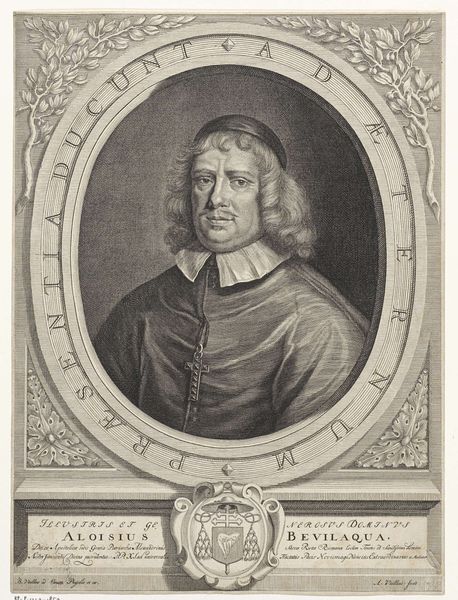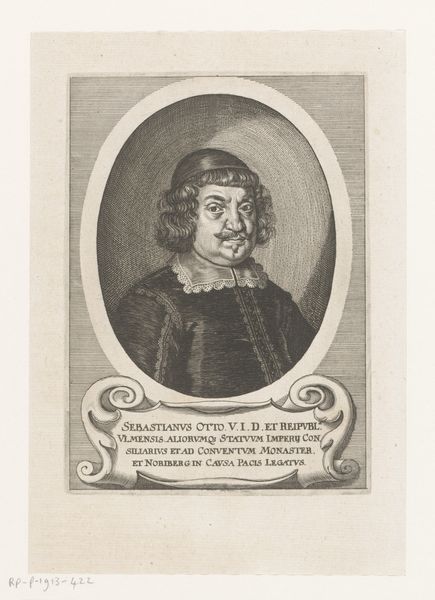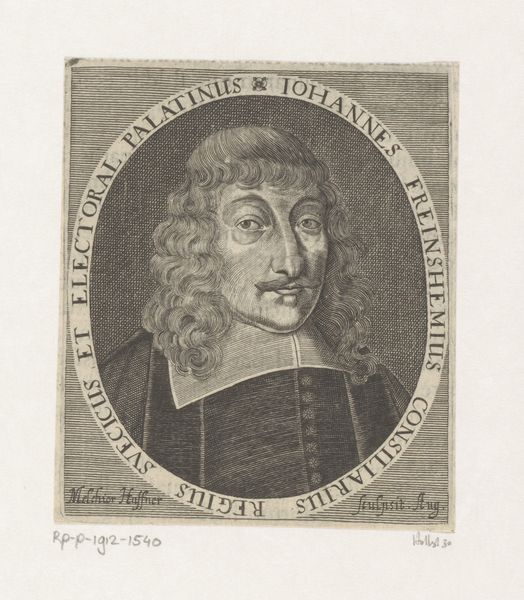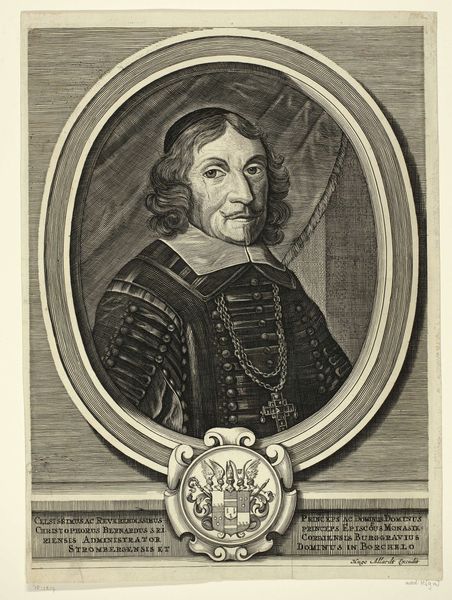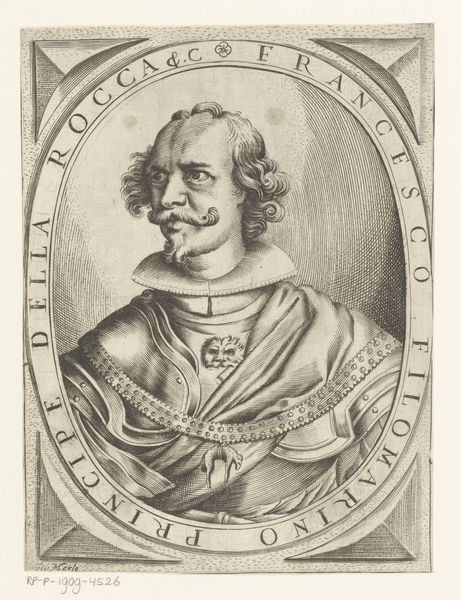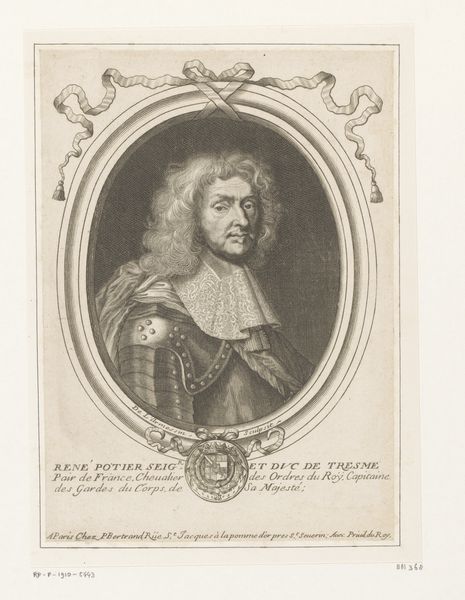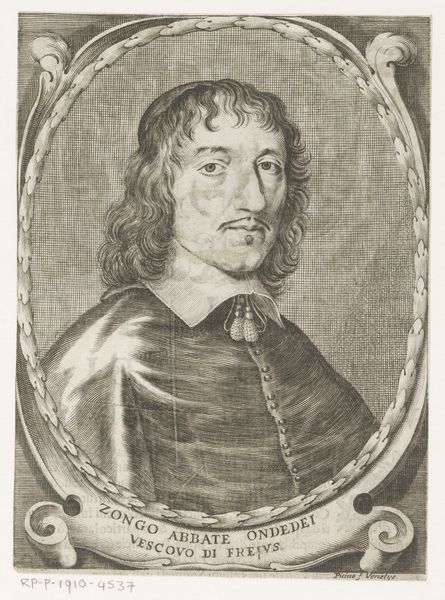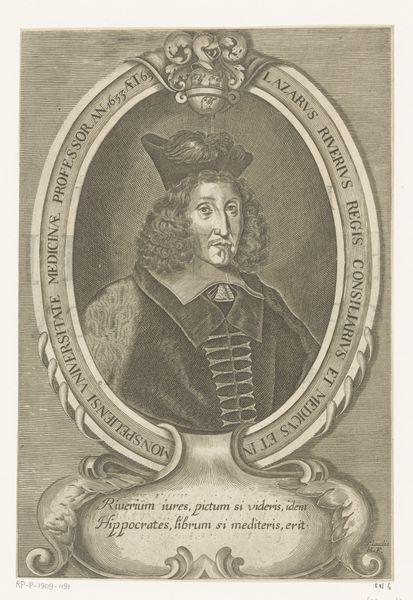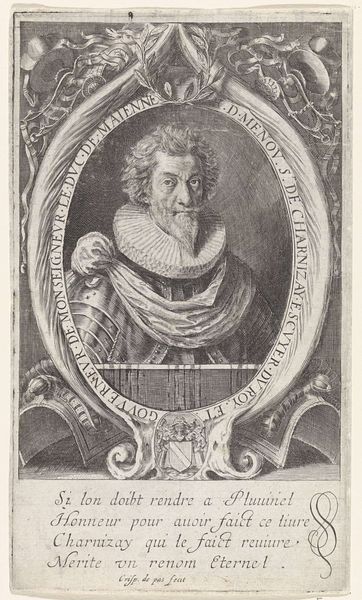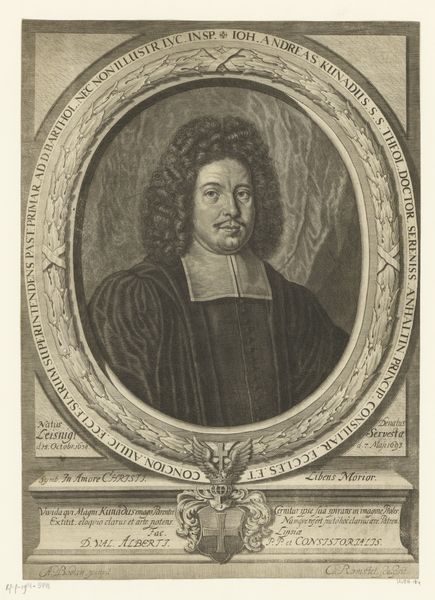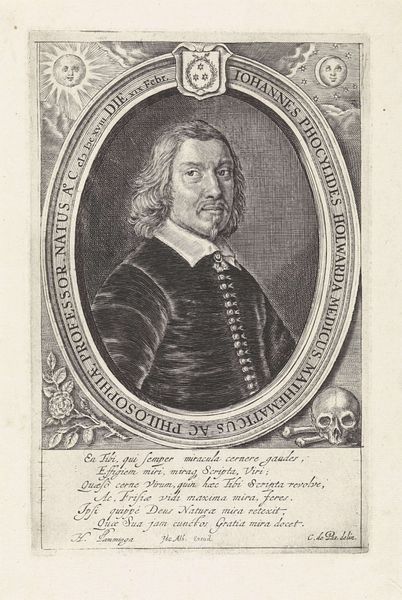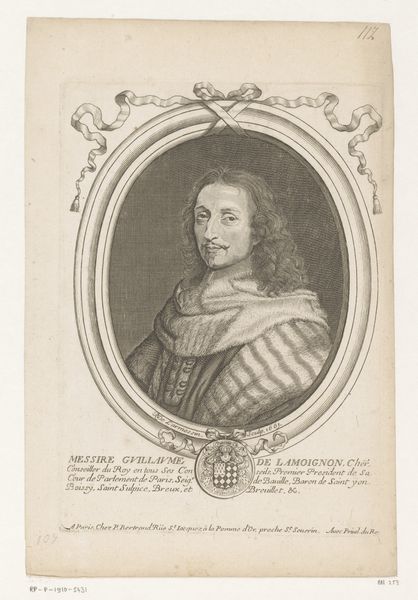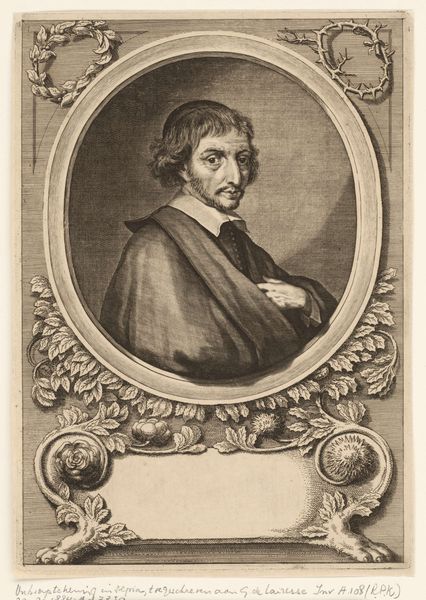
engraving
#
portrait
#
baroque
#
old engraving style
#
line
#
engraving
Dimensions: height 127 mm, width 80 mm
Copyright: Rijks Museum: Open Domain
Curator: The meticulous line work and controlled shading lend this engraving, "Portret van Johan Maurits van Nassau-Siegen," an air of considerable authority. It was created sometime between 1643 and 1667 by Adriaen Millaert. What’s your initial take on this, considering it reflects a historical and, potentially, powerful figure? Editor: Austere and somewhat weary. Even with the decorative border, which attempts to soften the image, there’s a profound seriousness emanating from the subject, particularly noticeable in his eyes. The armor suggests a life marked by conflict and responsibility. Curator: Indeed. The Baroque period often sought to convey the subject’s status, and armor frequently symbolizes military strength and noble lineage. The artist clearly aimed to capture Johan Maurits' prominence as governor of Dutch Brazil and his role as a prince. Notice how the lines articulate texture not only in the metal of the armor, but also on skin? Millaert really considered the iconographic nature of each line and its affect on the viewer. Editor: Right, it underscores his societal standing. Consider, too, the controlled presentation - his stance, expression, even the frame that encases him contributes to a narrative of controlled power. How do you feel this portrait participates in constructing and reinforcing historical memory of the man and his rule? Curator: The controlled elegance emphasizes not just personal power but dynastic legitimacy, and the engraving technique, while precise, also lends an air of timelessness. The intent might have been to create an idealized yet recognizable representation, reinforcing the sitter's perceived virtues and influence for posterity. In a very real way, that's continued to occur with us even discussing it now. Editor: Absolutely. Its visual rhetoric aimed for lasting impact. This piece compels us to reflect not just on the person it depicts but also on the image itself, what messages the image transmits about the structures of power. An efficient image, one could say. Curator: Yes, and examining how later audiences react to such deliberately crafted imagery remains important to understanding our continuing negotiation with historical figures and narratives. Thank you for joining me for this short discussion! Editor: My pleasure. The subtle details tell a bigger story and, as this image shows, remain impactful across centuries.
Comments
No comments
Be the first to comment and join the conversation on the ultimate creative platform.
